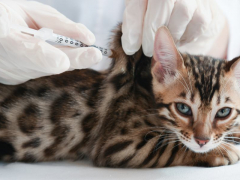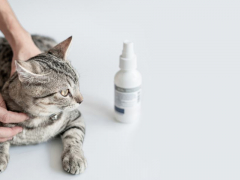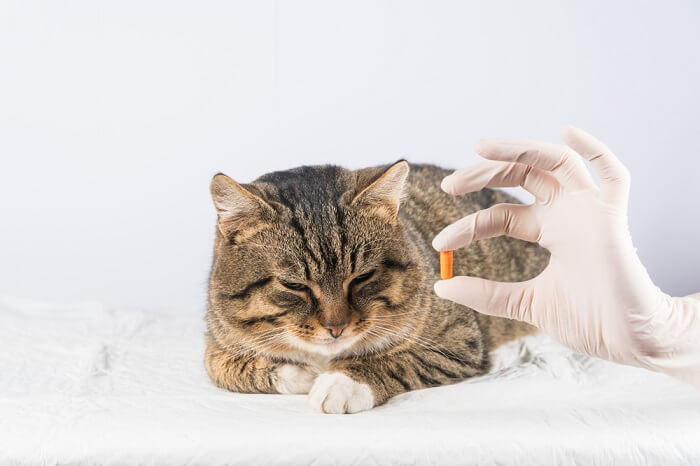
Prazosin is a medication most often used in cats to relieve signs of urinary straining. In this article, you’ll learn what Prazosin is, how it’s used in kitties, some potential side effects, and frequently asked questions.
Prazosin for Cats Overiew

About Prazosin for Cats
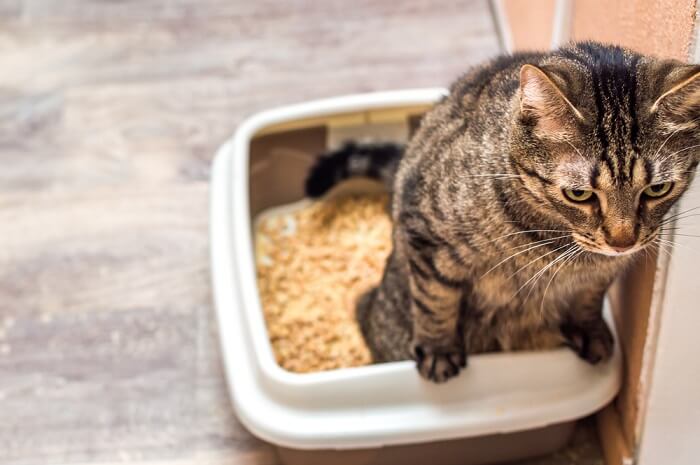
Prazosin is an alpha-1 adrenergic blocker. It directly acts as a smooth muscle relaxant. Because blood vessels are lined with smooth muscle, use of prazosin can also lead to relaxation of blood vessels and lower blood pressure.
Prazosin’s most common use in veterinary practice is to relieve urinary straining in cats by relaxing the smooth muscle tone of the urethral sphincter.
Before we continue, please note that if your kitty develops signs of a urinary straining episode, even if he or she has had one or more in the past, it’s always extremely important to notify your veterinarian. It is possible that a cat straining to urinate could have a urethral obstruction or blockage. If a cat develops a urinary obstruction and cannot urinate, this is considered a medical emergency requiring immediate veterinary care.
What Does Prazosin Do for Cats?
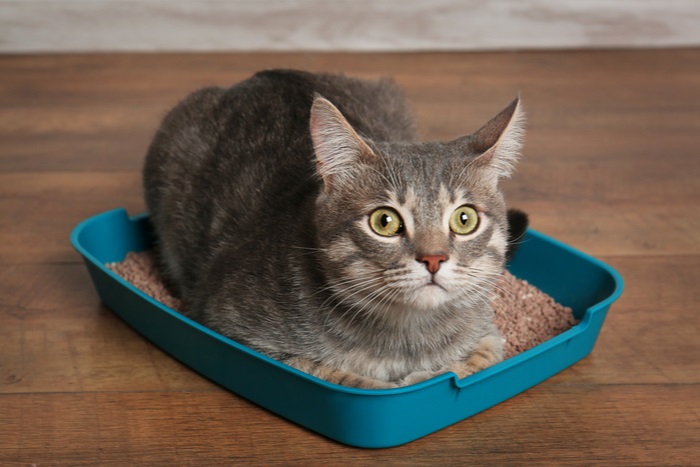
Feline Lower Urinary Tract Disease (FLUTD), a syndrome of conditions that lead to difficulty urinating and urinary straining in cats, is very common, especially in male cats.
In cats suffering from stress-induced urinary tract inflammation (also called feline idiopathic cystitis or FIC), urinary crystals, mucousy grit, urinary bladder stones, and other causes of FLUTD, we often find them pushing and straining very hard to pee. The urgent need to pee and straining to do it can often perpetuate the issue, leading to painful spasming of the urethra.
In theory, cats undergoing a FLUTD episode who are straining very hard to urinate, may benefit from prazosin use, as it can help to relax the smooth muscle in the urethra, relieving the urethral spasm and producing a better urine stream, which in turn helps the cat to relax and stop straining so much.
Prazosin use in cats is completely off-label, meaning it is not FDA-approved or labeled for this use. There are few studies available and limited scientific evidence to directly support using it for this purpose.
Veterinarians who prescribe prazosin use it primarily based on anecdotal evidence and personal experience seeing its benefit for feline patients in practice. There are many veterinarians who firmly believe prazosin use in cases of FLUTD episodes or even straining from urinary tract infections makes a big difference in the short term for relieving signs of urethral spasm and the return of comfort for our kitty patients, reducing the duration of individual episodes.
As it does relax the smooth muscle of blood vessels, leading to lower blood pressure, it may also be used primarily as a blood pressure medication for cats with high blood pressure or hypertension, but it is typically not a first-line choice for cats and its use for this purpose is generally uncommon.
Similarly, because lower blood pressure can reduce workload on the heart, it may be used in some cats with severe heart disease or in congestive heart failure. But again, it is not a first-line choice and is used very uncommonly for these purposes.
Side Effects of Prazosin for Cats
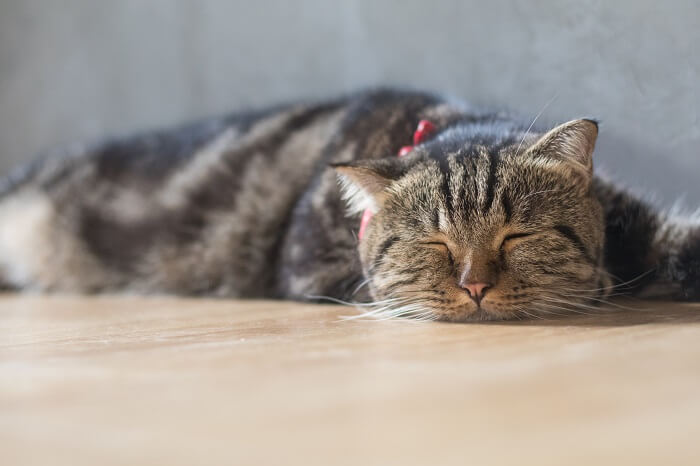
Side effects are rare in cats who use prazosin, though an overdose may lead to side effects, with low blood pressure the most common consequence of an overdose.
Side effects of prazosin appear to be uncommon in cats at commonly prescribed dosages, and mostly seem to appear in the cases of overdoses.
While there are no available studies specifically looking at side effects in cats, overdose exposures reported to the ASPCA Animal Poison Control Center between 2009 and 2013 showed low blood pressure as the most common finding, affecting less than half of the about 25 cats reported.
Signs of low blood pressure in a kitty may appear as lethargy, weakness, stumbling/poor coordination, poor appetite, and pale gums, among others.
Also Read: Cat Back Legs Collapsing: Causes, Symptoms, & Treatment
Because of its effect of lowering blood pressure, prazosin should be used very cautiously in cats with existing kidney failure, cats with pre-existing low blood pressure, or cats with hypertension already on one or more medications prescribed to lower blood pressure.
Gastrointestinal side effects like vomiting, diarrhea, and decreased appetite do not appear commonly, but have been reported.
Prazosin for Cats Dosage
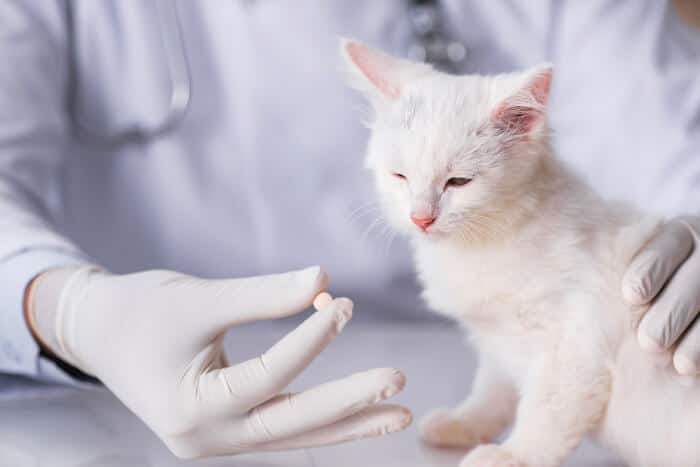
The appropriate dosage of prazosin for your cat will depend on their unique situation. Follow your veterinarian’s instructions to ensure that your cat gets the right amount.
The dosage of prazosin for cats is variable and usually based on a veterinarian’s experience using it, which is why it’s important to follow your vet’s instructions when this is prescribed for your kitty.
While dosage ranges may go up to 2mg per cat per day, anecdotally there appears to be little benefit above 1mg per cat per day and some vets use lower doses than that. It is common for the daily dose of prazosin to be given once a day or split into at least two doses.
Though protocols can vary, prazosin is most often only used short-term to help relieve a current urinary episode. This is usually for about 5-7 days.
Long-term use and as a preventative for urinary tract signs and straining in cats has not proven to be beneficial. A study from 2017 from the Journal of Veterinary Emergency and Critical Care did not find any evidence to support its use as a long-term preventative therapy.
Prazosin only comes in a powdered capsule form as a generic or the human brand Minipress. The capsules can typically be opened with the powder sprinkled and mixed with canned or soft food. Only the 1mg capsules are typically prescribed, as any dosages above this per day are unlikely to have more beneficial effects and can increase the risk for side effects.
In order to make dosing easier or more specific for some cats, some veterinarians may have prazosin compounded into liquid form or smaller dosage tablets.
Conclusion
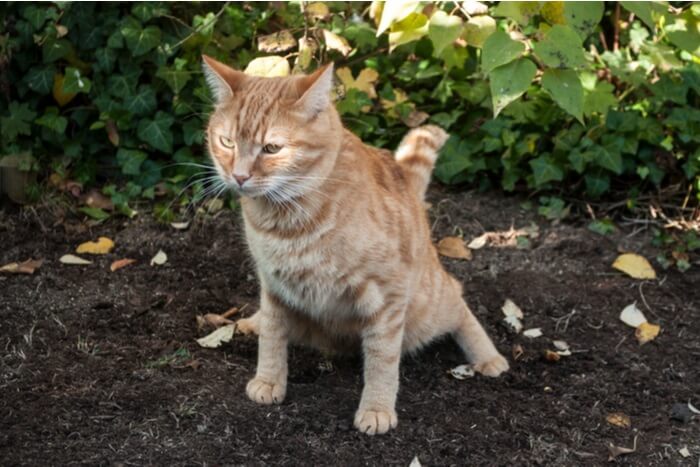
In practice, prazosin may be beneficial to help relieve signs of urinary straining in cats. There has been some more recent debate about its use for this purpose, especially in male cats, because of limited studies and evidence, but it does appear to be relatively safe to use at commonly-prescribed doses. Many veterinarians feel prazosin can really help symptomatic kitties and are confident in its use.
Drug Dosing Disclaimer: We are only able to provide doses for medications that are FDA approved for use in cats and only as the label guidelines dictate. For medications that are used off-label we can only provide guidelines and safety information for use. Safe and appropriate dosing for off-label medications can only be determined by a primary care veterinarian.
We encourage you to work with your veterinarian to determine if a particular medication is appropriate for your cat. Changing or adjusting a dose for your cat on your own without consulting with a veterinarian can carry risk. We do not encourage use of medications prescribed for human use in pets without first consulting with a primary care veterinarian.
